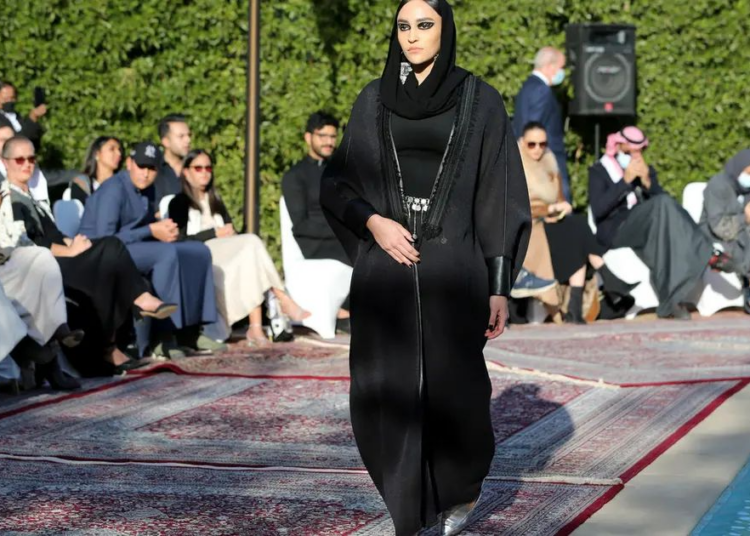A recent report titled ‘The State of Fashion in the Kingdom of Saudi Arabia 2023’ has unveiled Saudi Arabia’s meteoric rise as a formidable contender in the worldwide fashion arena.
The report, set to be revealed in the Kingdom this week, sheds light on Saudi Arabia’s ambitious strategy to reduce its dependency on foreign fashion imports and establish itself as a hub of indigenous talent.
The Saudi fashion industry’s remarkable growth potential takes center stage in the report, showcasing not only its rapid evolution but also its strategic alignment with the nation’s vision. The Kingdom’s youth are playing a pivotal role in propelling the country onto the global fashion platform.
The report underscores the critical role a thriving fashion sector can play in achieving the Vision 2030 goals.
According to Burak Cakmak, CEO of the Saudi Fashion Commission, “We are laying the groundwork for the future of fashion right here in Saudi Arabia.”
The Kingdom’s plan involves cultivating a self-reliant fashion value chain that encompasses design, manufacturing, logistics, and retail. This multifaceted approach seeks to not only curtail the reliance on imported fashion goods but also to create job opportunities, boost the non-oil GDP, and enrich the nation’s cultural tapestry.
In 2021 alone, the Saudi fashion industry incurred a substantial expenditure of $7.3 billion on imported fashion goods, underscoring the potential economic ramifications of nurturing domestic fashion capabilities.
As the sector matures, it is poised to make substantial contributions to the Vision 2030 objectives, positioning Saudi Arabia as a global fashion powerhouse while preserving its distinctive cultural heritage.
In 2021, the Kingdom’s finished goods industry for fashion registered a total trade deficit of $6.5 billion (SAR 24.4 billion), a significant rise from $5.1 billion (SAR 19.1 billion) in 2017. The bulk of this deficit is attributed to the apparel and footwear segments.
The Saudi fashion market’s dependence on imports is rooted in various factors, including the nation’s open trade system, global market connectivity, and local cost and skill-related challenges.
Previously operating under a joint venture framework mandated by the licensing system, retail holding companies controlled numerous mid-retail and luxury brand distribution licenses.
However, recent alterations to the licensing system have paved the way for direct foreign ownership of retail operations.
This policy shift has broadened Saudi Arabia’s potential to emerge as a prime fashion shopping destination, with directly owned branded stores proving to be more cost-effective compared to joint ventures or licensed operations.
Renowned international brands like Adidas Group and Nike Inc. have seized this opportunity, making direct investments in the Kingdom.
One prime example of this trend is Kamal Osman Jamjoom, a major retailer selling international fashion labels in Saudi Arabia. With in-house brands including Nayomi, Mikyajy, Mihyar, Moda by Nayomi, and Dream, Kamal Osman Jamjoom’s evolution echoes the changing landscape.
Nayomi, founded in Saudi Arabia in 1992, has blossomed into the Middle East’s premier lingerie brand, boasting 184 stores and a thriving e-commerce platform. The brand’s seasonal collections are complemented by an extensive beauty and fragrance range.
Hisham Al Amoudi, CEO of Kamal Osman Jamjoom, explains, “Developing our own brands has deepened our connection to the Saudi market. Rapidly evolving market dynamics have steered our product and broader fashion offerings, positioning us to capitalize on future market growth.”
As articulated in the report by Cakmak, Saudi Arabia’s fashion evolution, from traditional attire to a global fashion contender, marks a defining moment in the Kingdom’s journey.





